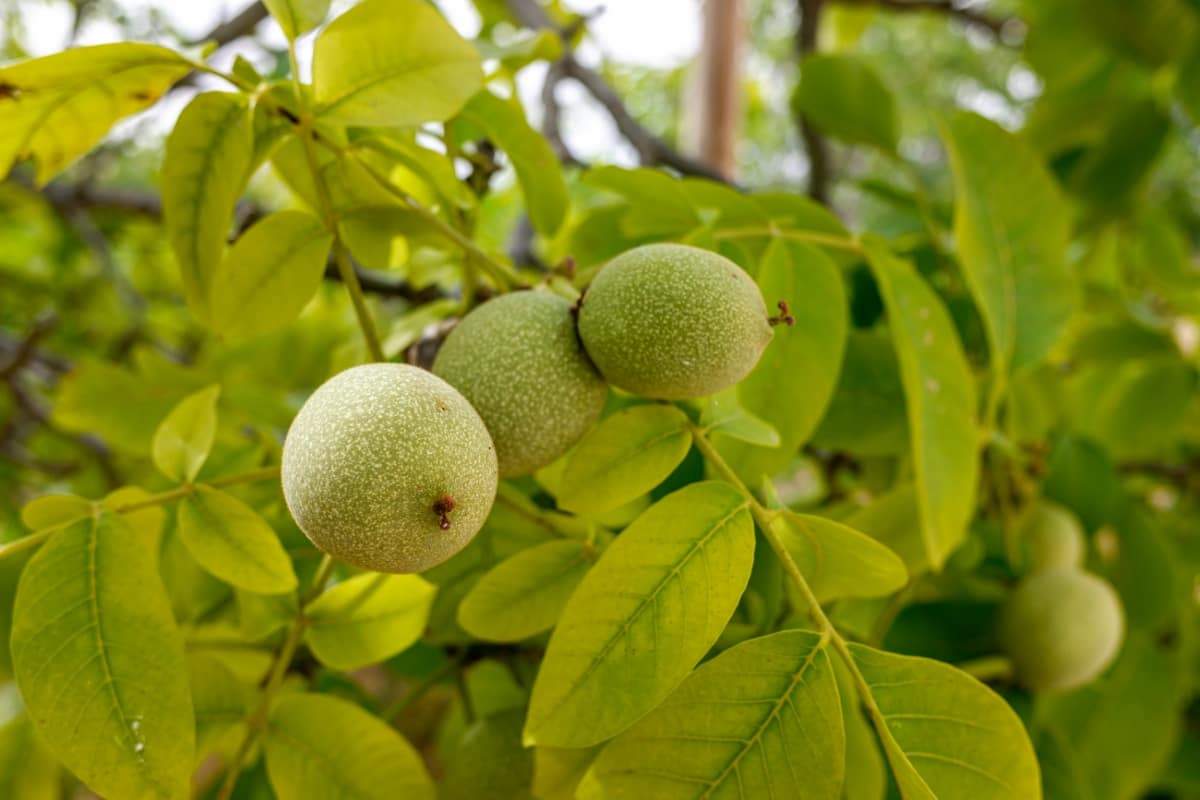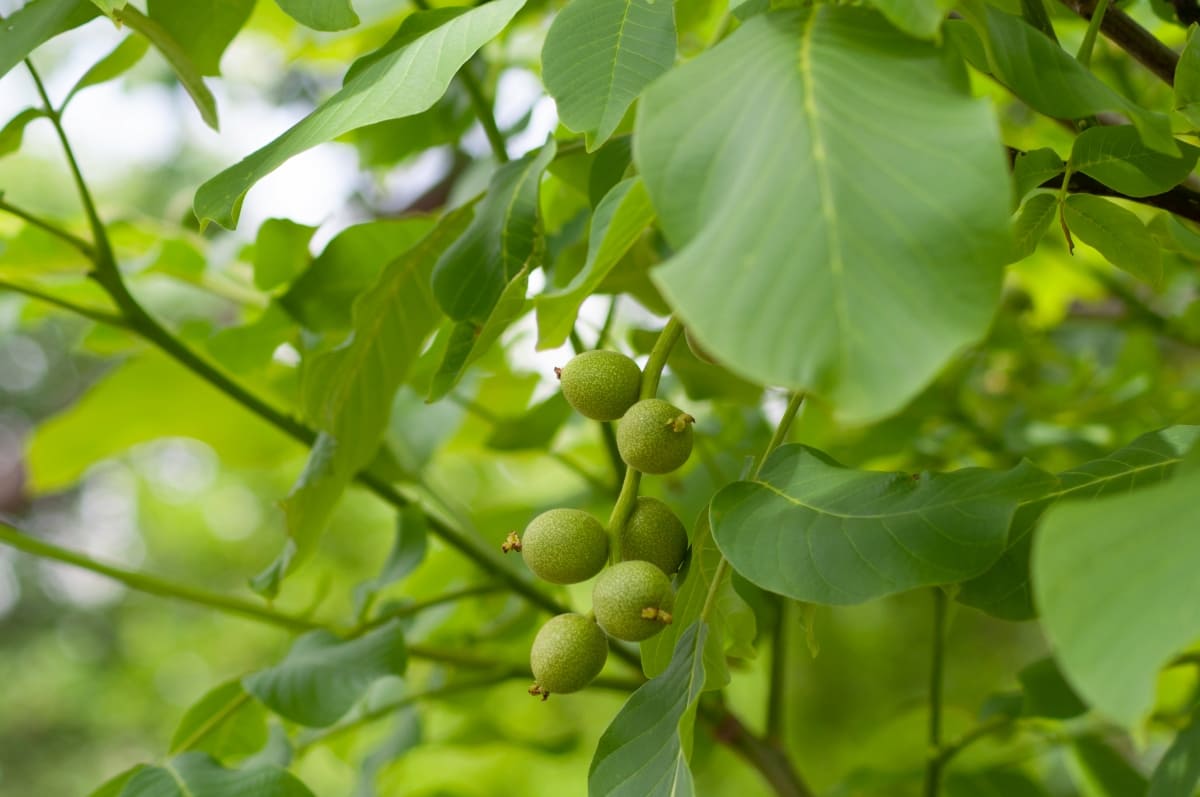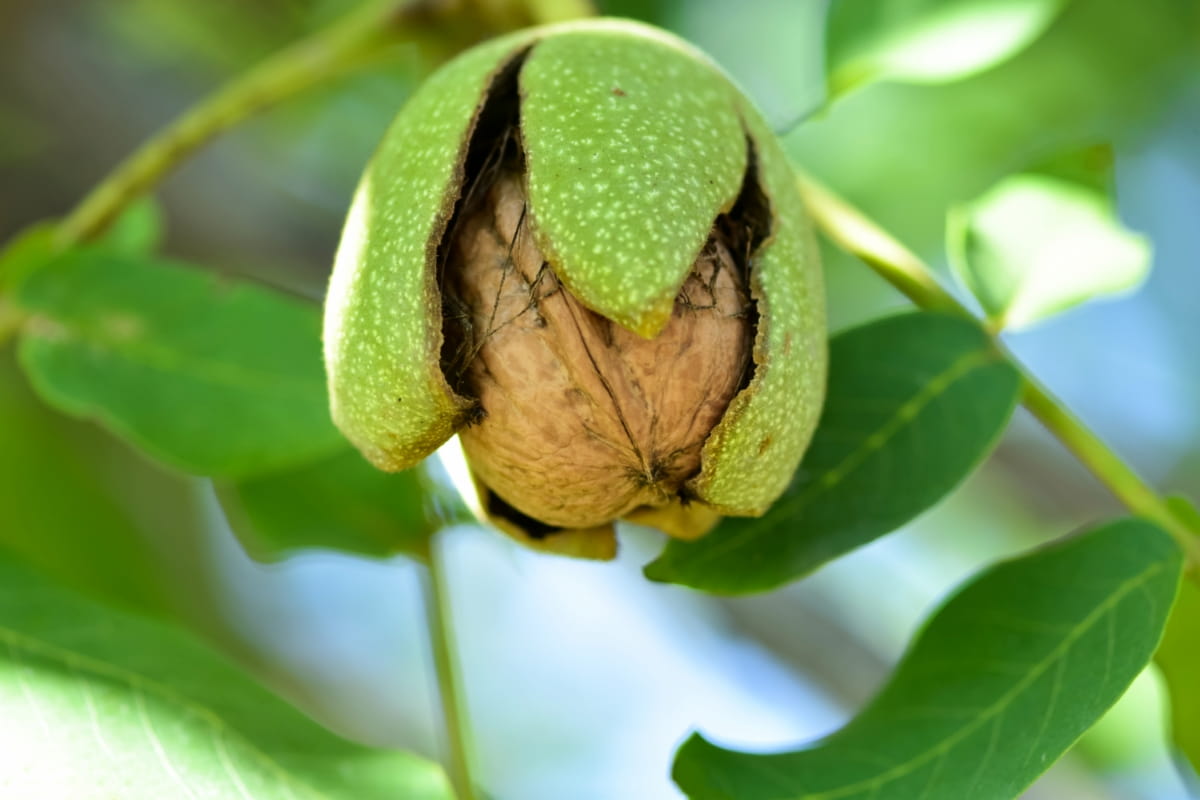Walnut trees are a popular choice for homeowners and gardeners due to their delicious nuts and beautiful appearance. However, these trees are susceptible to various diseases and pests that can cause them to die prematurely. This document will explore some of the most common causes of dying walnut trees and how to fix them.

9 Causes of Dying Walnut Trees
Why is My Walnut Tree Dying in Summer Heat, and How Can I Save It?
Walnut trees are known for their hardy nature and ability to withstand various environmental stresses. However, extreme temperatures can pose a threat to these trees. The highest temperature that can kill a walnut tree is around 43°C.
- Make sure the tree is getting enough water. During periods of extreme heat, trees need more water than usual to stay healthy.
- You can also mulch the area around the tree. This can be done by spreading organic material around the tree’s base, such as leaves, grass clippings, or wood chips.
- Place a shade cloth or covering over the tree or plant other trees or shrubs nearby to provide shade.
Preventing Walnut Tree Death from Fungal Infections: Effective Remedies and Prevention Tips
Fungal infections are a serious concern for walnut trees, as they can lead to tree death if left unchecked. Several types of fungal infections can affect walnut trees, including:
Cankers Disease
- It causes small cankers to form on the branches and trunk of the tree, which can eventually lead to the tree’s death.
- Copper fungicides are effective against many fungal diseases, including Thousand Cankers Disease and Anthracnose.
Anthracnose
- This is a fungal disease that affects the tree leaves, causing them to turn brown and fall off.
- Propiconazole fungicide is effective against various tree diseases, including Armillaria Root Rot.
Armillaria Root Rot
- This disease attacks the tree’s roots, causing them to rot and eventually leading to the tree’s death.
- Tebuconazole fungicide is effective against many fungal diseases, including Anthracnose.
Identifying Nutrient Deficiencies in Walnut Trees and Remedies to Revive Them
Many factors, such as soil pH, texture, and rootstock, can cause nutrient deficiencies in walnut trees. Identifying these deficiencies early and addressing them with the appropriate fertilizers is important.
Nitrogen deficiency
- Symptoms of nitrogen deficiency include yellowing of leaves, stunted growth, and reduced yield.
- To address this deficiency, fertilizers containing ammonium nitrate, urea, or sodium nitrate can be applied.
Phosphorus deficiency
- Symptoms of phosphorus deficiency include stunted growth, purple or reddish leaves, and reduced fruit size.
- Fertilizers containing superphosphate or triple superphosphate can be applied to address this deficiency.
Potassium deficiency
- Symptoms of potassium deficiency are yellowing of leaves, leaf margins becoming scorched, and reduced yield.
- Fertilizers containing potassium chloride or potassium sulfate can be applied to address this deficiency.
How to Protect Walnut Trees from Pests and Diseases to Prevent Decline and Death
Regularly inspect your walnut trees for signs of pests and diseases. Look for visible damage to the tree’s leaves, branches, or trunk. Some common pests that can attack walnut trees include aphids, mites, and scale insects. Diseases affecting walnut trees include walnut blight, crown rot, and root rot.
- Insecticides and fungicides can effectively control pests and diseases, but using them judiciously and per label instructions is important.
- Additionally, many natural remedies can be used to control pests and diseases, such as neem oil, garlic spray, and companion planting.
In case you missed it: 9 Causes of Dying Kumquat Trees and How to Fix Them?

Overwatering Issues in Walnut Trees: Signs, Symptoms, and Steps to Rescue a Dying Tree
Overwatering happens when the soil around the tree is soaked with water for an extended period. Signs of overwatering include yellowing leaves, stunted growth, and root rot. If any of these signs are detected, taking action immediately is essential to save the tree.
- Remove any excess water from the soil. This can be done by creating drainage channels around the tree or using a pump to remove standing water.
- Allowing the soil around the tree to dry out before watering the tree again is essential.
- Ensure that the tree is planted in well-draining soil
- It’s also recommended to avoid planting walnut trees in areas where water accumulates, such as low-lying areas or near drainage ditches.
Underwatering Issues in Walnut Trees: Signs, Symptoms, and Steps to Rescue a Dying Tree
Underwatering is a common issue that walnut trees face, causing various problems for growers. One of the key signs of underwatering is wilting, where the tree leaves become limp and droop. This indicates that the tree is not receiving enough water, and action should be taken immediately to prevent further damage.
Other signs of underwatering include leaf scorching, leaf curling, and yellowing of the leaves. Ensure that the tree is receiving enough water. Ensuring that the soil around the tree can retain moisture. Mulching around the walnut tree base can be an effective way to retain moisture in the soil.
Walnut Tree Winter Damage/Dying: Protecting Trees from Frost and Cold Temperatures
Generally, mature walnut trees can survive temperatures as low as -29°C for short periods. However, younger trees and those not in good health may be unable to withstand such extreme cold. It is also important to note that even brief exposure to temperatures below -18°C can cause significant damage to the tree’s bark and tissue.
- One of the most effective ways is to cover the walnut tree with a blanket or tarp during cold weather.
- Wrap the tree trunk with insulating material, such as burlap or plastic, to prevent the tree from losing heat through the trunk.
- You can mulch around the tree’s base to help insulate the walnut tree roots and protect them from freezing. Be sure to use a layer of mulch at least 2-3 inches thick and spread it evenly around the tree’s base.
Improper Pruning May Cause Walnut Tree Death: Pruning Methods for Healthy Growth
- Pruning during the wrong time of year can lead to decreased fruit production and increased susceptibility to disease. It is important to prune walnut trees during their dormant season, typically between late fall and early spring.
- It is important only to remove dead, diseased, or damaged branches. Removing healthy branches can cause the tree to produce less fruit and can lead to growth problems.
- Any branches that are crossing or rubbing against each other should be removed. Finally, any branches growing towards the tree’s center should be removed for better airflow and sunlight penetration.
Reviving a Stressed Walnut Tree: Rehabilitation Methods for Overall Recovery
Identify the Cause of Stress. This can be done by observing the tree’s symptoms and conducting a soil test. Common symptoms of a stressed walnut tree include yellowing leaves, wilting branches, and decreased fruit production. Once the cause of stress is identified, appropriate actions should be taken to address the issue.
- Fertilizers should be applied to the soil to address these deficiencies. However, it is important not to over-fertilize, as excess nutrients can also contribute to stress.
- Proper irrigation ensures the tree receives adequate water without drowning its roots.
- Dead or diseased branches must be removed to prevent the spread of disease. Additionally, pruning can help improve air circulation and sunlight penetration, promoting the growth of new, healthy branches.
- Pests and diseases can further stress a walnut tree. Regular inspection and treatment can help prevent and control pest and disease infestations.
In case you missed it: 9 Causes of Dying Carambola Trees and How to Fix Them?

Conclusion
In conclusion, there are several causes of dying walnut trees, but with proper care and attention, many of these problems can be fixed. It is important to identify the problem cause and take the appropriate actions to fix it to ensure the health and longevity of the tree.
- Feed Your Flock for Less: Top 10 Tips to Save on Chicken Feed
- Ultimate Guide to Ossabaw Island Hog: Breeding, Raising, Diet, and Care
- Hatching Answers: The Top 10 Reasons Your Chickens Aren’t Laying Eggs
- Eggs and Economics: Breaking Down the Cost of Raising Backyard Chickens
- Defend Your Greens: Proven Methods to Keep Iguanas Out of Your Garden
- Ultimate Guide to Cinnamon Queen Chicken: A Comprehensive Guide for Beginners
- Ultimate Guide to California Tan Chicken: Breeding, Raising, Diet, Egg-Production and Care
- Ultimate Guide to Marsh Daisy Chicken: Breeding, Raising, Diet, and Care
- 10 Types of Chicken Farming Businesses You Can Start for Profits